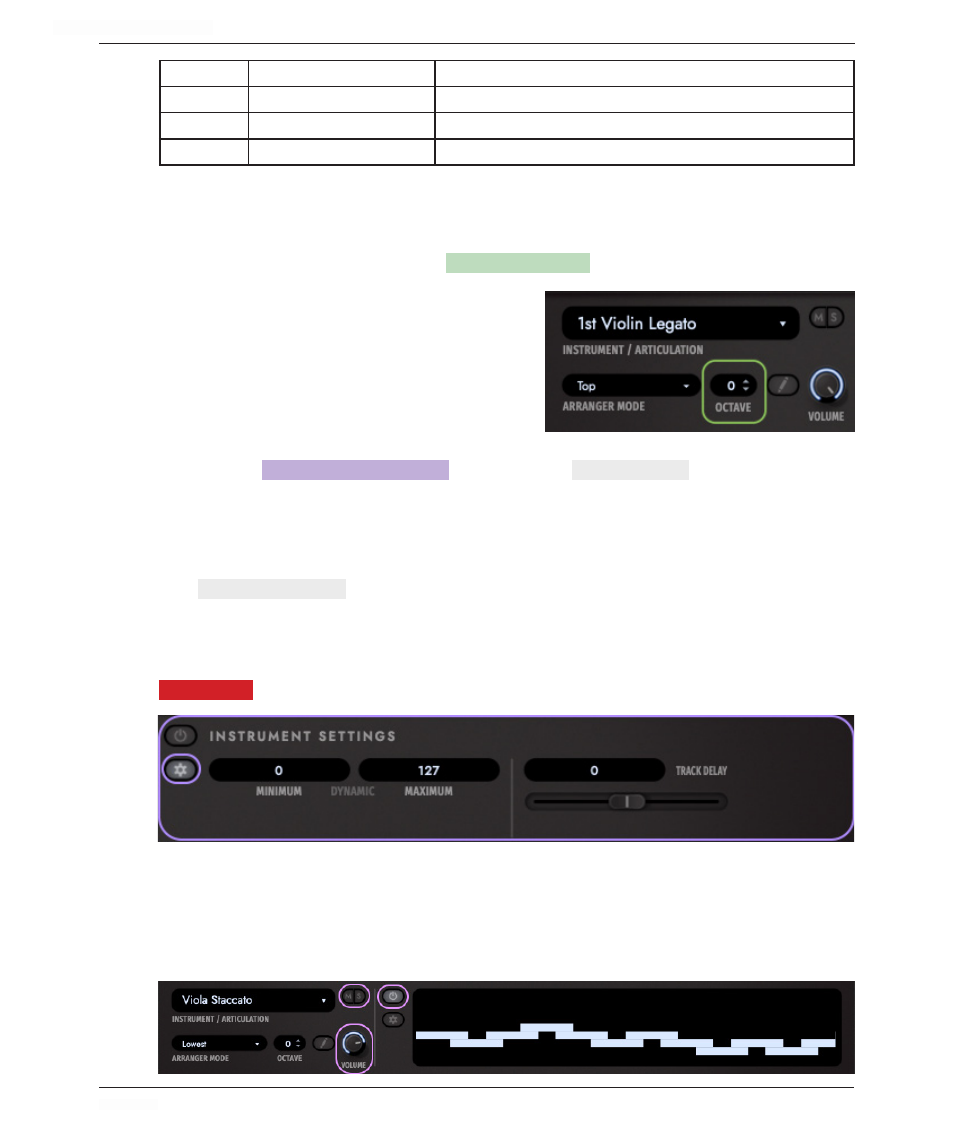EastWest Hollywood Orchestra Opus Edition Virtual Instrument Plug-In (Download) User Manual
Page 173

HOLLYWOOD ORCHESTRA OPUS EDITION
<
CHAPTER 5: PERFORM
173
<
SLOT 13
VIOLINS 2
2nd Violins
SLOT 14
VIOLAS
Violas
SLOT 15
CELLI
Celli, Solo Cello
SLOT 16
BASSES
Basses
Octave Shift
Once you have chosen which notes you want an instrument to play, you can also
decide, if you want the instrument to play them in the same octave as you do. If you
do not want that, you can use the
OCTAVE SHIFT
CONTROL
to shift them up or down by up
to 4 octaves.
Whether you need a close harmony woodwind ensemble playing staccato, a widely
arranged sustain string ensemble or a huge
orchestra, this mechanic allows you to
arrange any chord you play across any
selection of instruments and articulations.
Instrument Settings
Click on the
INSTRUMENT SETTINGS
BUTTON
, then use the
DYNAMIC
CONTROL
to set the minimum
and maximum value range for whatever is controlling dynamics on a per instrument
basis, whether that is Mod Wheel (CC 1), Expression (CC 11), or Note Velocity.
Leave the settings at 0 (min), and 127 (max) for full dynamic range, or try a setting
of 0 (min) and 63 (max) to limit the top dynamic range for a softer expression.
The
TRACK DELAY
CONTROL
control enables a + / - 100 ms (millisecond) delay on the
sequencer timing, on a per instrument basis. Shifting the track forward (positive
values) results in a delayed onset, and shifting the track backward (negative values)
results in an advanced onset.
PLEASE NOTE:
If the sequence is turned off, this control has no effect.
Volume, Mute/Solo, On/Off
Basic controls for each Instrument Slot include volume, mute/solo, and sequence
on/off. These controls (except the sequence on/off switch) are linked to the same
controls in the Mixer View of Hollywood Orchestrator, and to the same controls in
the instrument themselves running in Opus.
